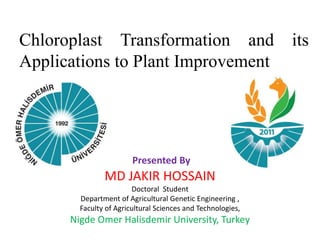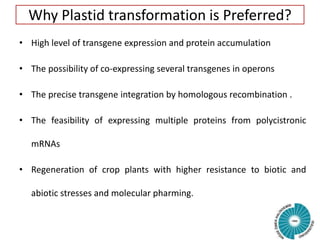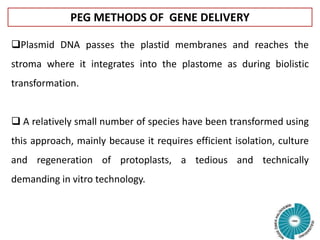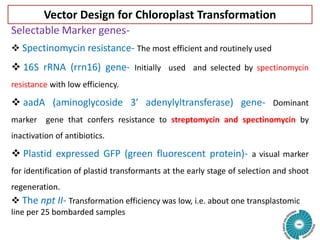The document discusses chloroplast transformation, detailing the unique characteristics and advantages of targeting chloroplasts for genetic engineering in plants, including high levels of protein production and gene containment. It outlines key milestones in chloroplast engineering, methods of DNA delivery, and the design of vectors for effective transformation. Additionally, it highlights the applications of chloroplast transformation in improving agronomic traits and producing pharmaceuticals.












































